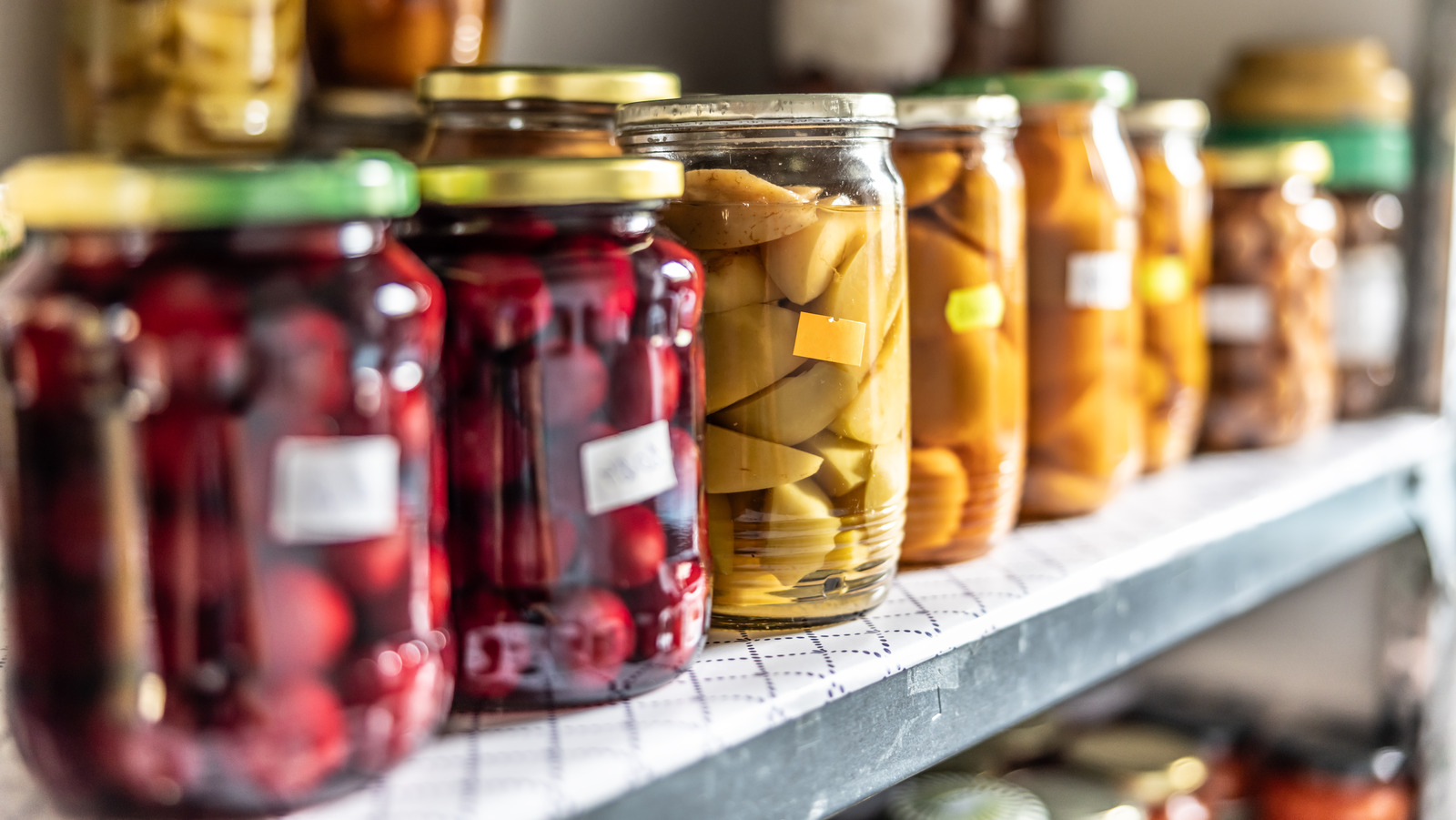Home-canning is a fun, fascinating foray into food science, and a thrifty way to make your garden harvest last year-round. On the flip side, it can be massively frustrating to have to abandon those lovingly home-canned goods when something goes wrong along the way. But, ingesting the contents of a compromised jar has the potential to make you sick. During your food’s tenure in the sealed jar, keep an eye out for fizzy air bubbles.
Today’s expert tip comes from chef Justin Simeon, chef de cuisine at L.A.’s Alta Adams restaurant and 20-year veteran private chef. Simeon sat down with us to explain 10 telltale signs your canned goods have gone bad, and as he shares in an interview with Tasting Table, “Tiny [air] pockets are fine as long as they are stationary. If the bubbles are moving from top to bottom, that is a sign of bacteria or fermentation.”
Bacteria growth produces gas, which causes visible gaseous air bubbles to rise to the surface. Take a close look at the side of your jar: A few static air bubbles are natural, normal, and totally fine. Fizzy spoilage bubbles, on the other hand, will be tiny and in constant motion. They may also not appear until the jar has been opened. As Simeon notes, “If a jar or can is opened and it starts to fizz or foam, the contents may have been compromised.” Opened or unopened, if you spy fizzy, moving bubbles at any point, toss the jar.
Make sure those air bubbles aren’t moving — fizzy bubbles are a bad sign
That gaseous buildup is also the reason why spoiled aluminum cans of food tend to bulge. It’s a sign of heavy bacterial activity inside. Similarly, if the contents of your jar have risen, grown, and begun oozing and seeping under the lid, that’s another sign of gaseous bacterial overgrowth. Still, don’t let a healthy dose of informed caution steer you away from the joy of home-canning. If the lid has “pinged,” indicating that a proper seal has been formed, then generally there shouldn’t be anything to worry about (granted no issues were present beforehand). Also, keep in mind that fermented produce is going to naturally produce air bubbles. But, the food-science process of fermentation requires specific acid levels to be performed safely, so if you “didn’t mean to” ferment the contents of your jar, it’s better to play it safe than sorry. Don’t eat any surprise-fermented fare. (No botulism here, officer.)
Moreover, trapped air inside a low-oxygen environment can compromise a jar’s seal, allowing harmful bacteria to enter the scene. This is why de-bubbling a jar before sealing it in the first place is so crucial to successful home-canning. To do it, grab a wooden chopstick or plastic spatula (no metal tools), insert it into the jar, and slowly trace the inner circumference several times. Avoid excessive agitation or “stirring” here. Before popping the lid on, be sure to wipe the rim of the jar clean to ensure a proper seal.






